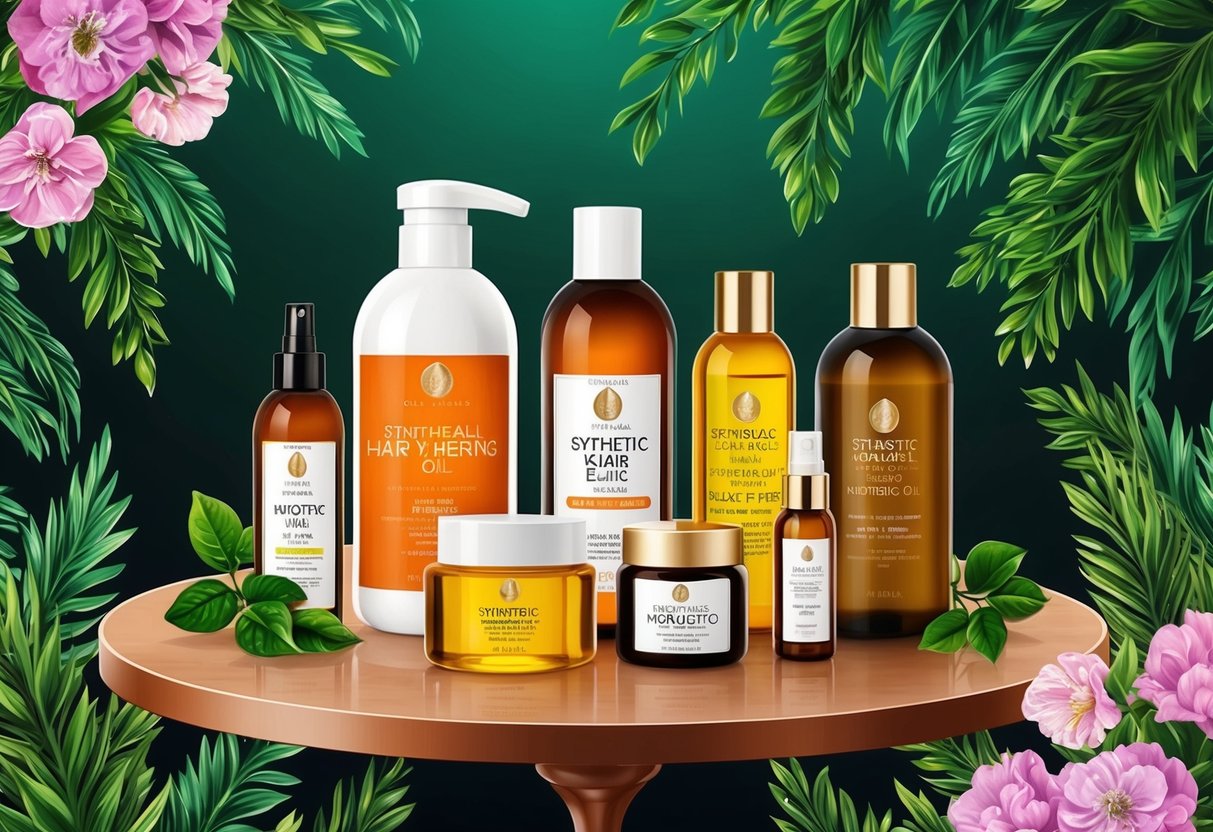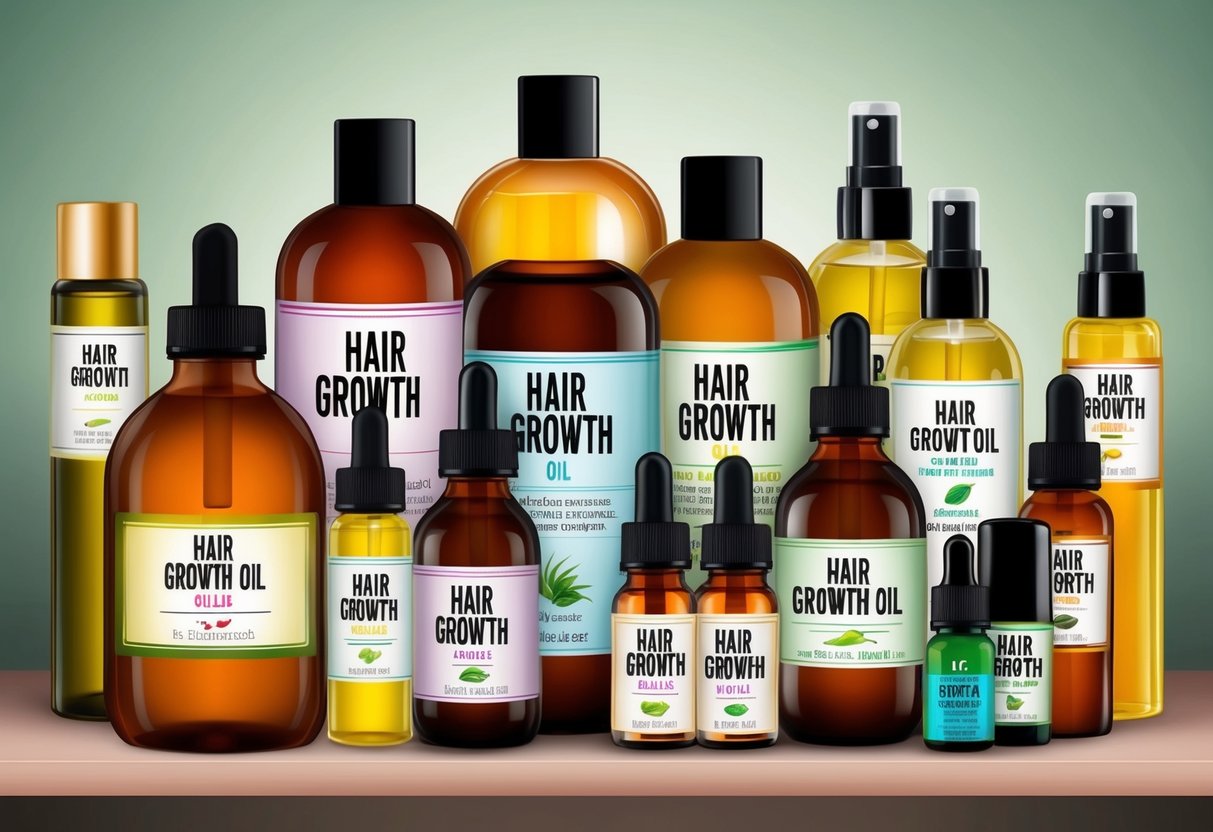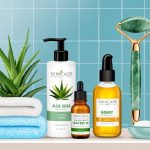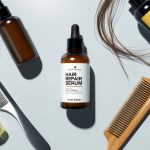Best Hair Growth Oils for Thicker, Healthier Hair: Top Picks and How to Use Them
Comparing Synthetic vs. Natural Hair Oils

Hair oils are used widely for boosting hair thickness and scalp health. The choice between synthetic and natural options often depends on their key ingredients, effectiveness, and potential side effects.
Benefits and Drawbacks
Natural hair oils like coconut, argan, rosemary, and jojoba remain popular for encouraging hair growth and strength. They often contain essential fatty acids, antioxidants, and vitamins that help nourish the scalp and strengthen hair strands.
Some, such as rosemary oil, have been shown to provide specific benefits for stimulating hair follicles and improving thickness. Common natural oils recommended for growth and thickness include castor oil and olive oil.
Synthetic hair oils use lab-produced ingredients to mimic or enhance the effects of natural oils. They typically include silicones or other synthetic emollients to smooth hair, reduce frizz, and add shine.
These formulations may also be fortified with vitamins or UV filters. While synthetics can give immediate cosmetic improvement, they may cause buildup with repeated use and could be less effective at nourishing the scalp over time.
Consumers might notice fewer long-term benefits compared to natural scalp oil blends.
Safety and Allergies
Both synthetic and natural hair oils should be patch-tested before full application. Synthetic ingredients can sometimes trigger allergic reactions or sensitivities, particularly in sensitive individuals.
Some silicones may cause scalp buildup, hindering healthy hair growth or causing irritation when not washed out properly. Natural hair oils, while less likely to contain harsh chemicals, are not risk-free.
Essential oils such as peppermint or tea tree may cause itching or redness if used undiluted. Natural nut oils, like almond, could be problematic for people with allergies.
Reviewing ingredient lists and seeking dermatological advice is important, especially if encountering skin conditions or known allergies. Proper dilution of essential oils and moderation in use help minimize adverse reactions for both synthetic and natural choices.
Shopping Guide: Finding the Best Hair Growth Oils

Choosing the right hair growth oil depends on understanding key ingredients and evaluating product value. Ingredient lists and pricing can impact thickness, health, and shine, so it’s important to know what to look for when comparing the best hair oils.
Understanding Ingredients Lists
When browsing the ingredients list, look for well-researched oils. Popular choices include argan oil, coconut oil, rosemary oil, castor oil, and jojoba oil.
These oils are often highlighted in top picks because they support scalp health and moisture. Avoid products with high concentrations of synthetic fragrances, sulfates, or unnecessary fillers.
Natural extracts and cold-pressed oils tend to retain their nutrients better. Scan for botanical additions like tea tree oil or peppermint oil, as they may offer added benefits for stimulation and scalp balance.
If sensitive to scent, select oils with minimal or natural fragrance. Ingredients are listed from highest to lowest concentration, so the most effective oils should appear near the top.
Always check for allergens or irritants if you have sensitive skin.
Evaluating Price and Value
Price varies widely among the best hair oils, but higher cost does not always mean better results. When comparing options, consider the amount of active ingredients, the purity of the oils, and whether the formula uses cold-pressed or organic sources.
Evaluate the product size and estimated number of uses per bottle. Some oils may seem more expensive upfront but last longer due to a thicker texture or concentrated formula.
Check reviews and brand reputation, as well as return policies, which can help you find a product that fits both budget and needs.
A simple comparison table can help:
| Hair Oil | Active Ingredients | Size | Price |
|---|---|---|---|
| Argan Oil | 100% argan | 3.4 oz | $15-25 |
| Castor Oil | Pure castor | 8 oz | $8-12 |
| Blend | Argan, coconut, jojoba | 4 oz | $20-30 |
Balance cost with quality by prioritizing ingredients and proven results. Look for value in how well the oil performs, not just the price tag.
For more detail on top choices and their performance, refer to this list of best hair growth oils.
Potential Side Effects and Considerations

Hair growth oils can offer benefits like stronger strands and reduced breakage, but they are not risk-free. Users should be aware of unwanted reactions, especially if they have scalp inflammation or sensitive skin, and how these oils may interact with other common treatments.
Allergic Reactions and Sensitivities
Some individuals develop irritation, redness, or itching after using hair growth oils. Essential oils such as rosemary, peppermint, and tea tree are popular ingredients, but these can provoke allergies or worsen existing scalp conditions, leading to flare-ups or increased sensitivity.
Heavy oils, like olive oil, may clog pores, which can cause or worsen scalp folliculitis and other inflammatory conditions. Those with seborrheic dermatitis, dandruff, or a history of allergies should perform a patch test before widespread use.
Patch testing involves applying a small amount of the oil behind the ear or on the inner forearm and waiting 24–48 hours to observe for a reaction. Ingredients that affect hormone pathways, such as saw palmetto oil targeting testosterone, may also trigger unexpected side effects for some users if they are sensitive or use prescription treatments for hair loss.
Symptoms of concern include persistent itching, rash, swelling, or severe dryness and should prompt discontinuation of the product. Learn about potential issues with heavy oils by reviewing the risks associated with olive oil.
Interactions with Other Hair Products
Hair growth oils can interact with medicated shampoos, conditioners, or topical treatments like minoxidil. Oils may form a barrier on the scalp, limiting the effectiveness of leave-in products or medicated creams designed to address dandruff or scalp inflammation.
Layering multiple products can also increase the likelihood of irritation or allergic response, especially if active ingredients overlap. For individuals using prescription hair loss solutions, such as minoxidil, applying heavy or occlusive oils beforehand can reduce absorption and impact results.
It’s essential to consider the timing and order of application. Ideally, oil-based products should be used separately from water-based or medicated treatments.
Monitoring for increased flaking, residue, or scalp discomfort is recommended, as this may indicate a problematic interaction between products. Consult with a healthcare professional or dermatologist if persistent scalp inflammation or excessive dandruff occurs after starting a new oil.



